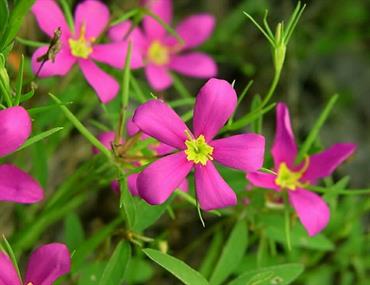Arkansas Heritage Program
Arkansas Biodiversity Data
The Arkansas Natural Heritage Commission (ANHC) works to conserve the Arkansas biodiversity by identifying ecologically important areas and setting priorities for their protection and the species that inhabit them. To that end, ANHC's Arkansas Heritage Program maintains a dynamic biodiversity database that tracks the location and status of rare species of animals and plants as well as natural communities in Arkansas.
Currently, the Arkansas Heritage Program biodiversity database maintains information on more than 1,000 rare species of animals and plants. The U.S. Fish and Wildlife Service lists some of these species as endangered or threatened, while others are simply considered rare in Arkansas. For most of these "elements of special concern," the Arkansas Heritage Program tries to collect all known locations, which it records in the Arkansas biodiversity database.
The Arkansas Heritage Program is a member of NatureServe, an international network of state natural heritage programs and conservation data centers. NatureServe members utilize the same data management methodology, enabling information regarding biological diversity to be exchanged across state and international boundaries.
Staff continuously update and add new information to this database from a variety of sources. Information is gathered from herbaria, museums, scientific publications, research studies, and field surveys conducted by ANHC staff. As the central repository for statewide information on rare species and natural communities, the Arkansas Heritage Program's biodiversity data is useful to a wide range of groups. Data are commonly used for:
Biodiversity assessment: The Arkansas Heritage Program's standardized methodology provides a consistent process for evaluating the relative imperilment of native species and natural communities. The result is a dynamic process that updates the conservation status and ranks of rare elements of biodiversity as new data becomes available.
Land management planning: ANHC uses Arkansas Heritage Program data as the primary tool in the location and identification of ecologically significant lands most in need of protection. Data are also provided to government agencies and other land management organizations specific to their respective holdings. With this data in hand, rare species and natural communities can be factored into land management plans.
Environmental review/information-sharing: Data from the Arkansas Heritage Program is used by ANHC staff in the review of specific project-related impacts through the state environmental review process. Examples include commercial and residential developments, transportation projects, utility construction, landfills, mining, and flood control projects. Data is also provided to private developers and public land use planners to notify them of the location of rare species or biologically sensitive areas early in the planning process.

New Explorers
Even though ANHC maintains a vast amount of data on Arkansas’ rare
species of animals and plants, this information needs constant updating
and
is far from complete. Records in the Arkansas Heritage
Program biodiversity database span a long time frame, with entries from
the mid-1800s
up to the present. Older records require updating to
accurately assess rare species persistence and conservation status. We
also still lack
a great deal of basic information about Arkansas’s
biodiversity. Many areas of the state have yet to be fully surveyed for
rare species or
remnant natural communities, while some species groups have
simply gone completely unstudied.
To fill these gaps in our knowledge, ANHC staff conduct
field surveys to verify historically known rare species and natural
community occurrences
and to locate previously undocumented occurrences. This
survey work can result in the discovery of new populations of rare
species, species
new to Arkansas, or undocumented natural communities.
Results of this work can also be used to gauge the health and stability
of rare species,
identify high priority sites, develop conservation measures,
and guide natural area management practices.